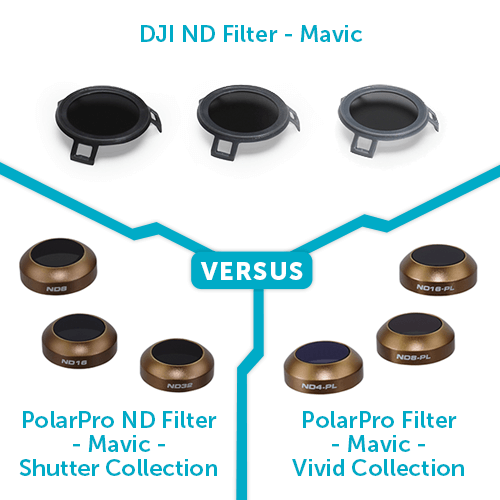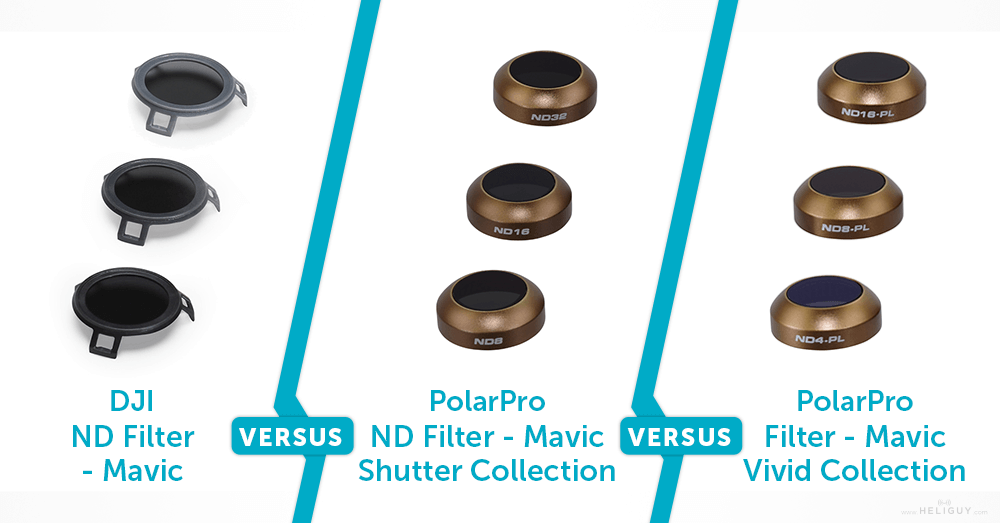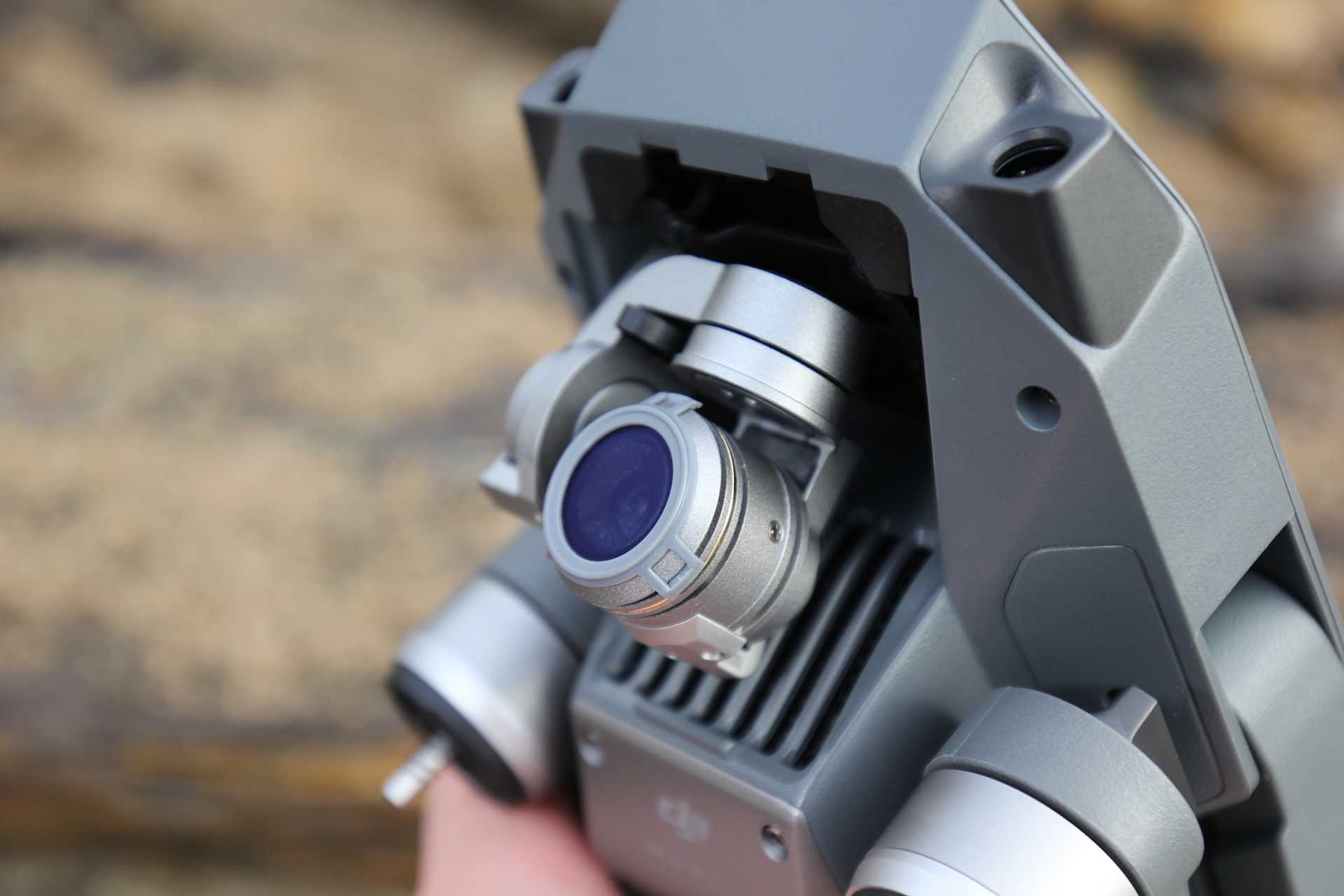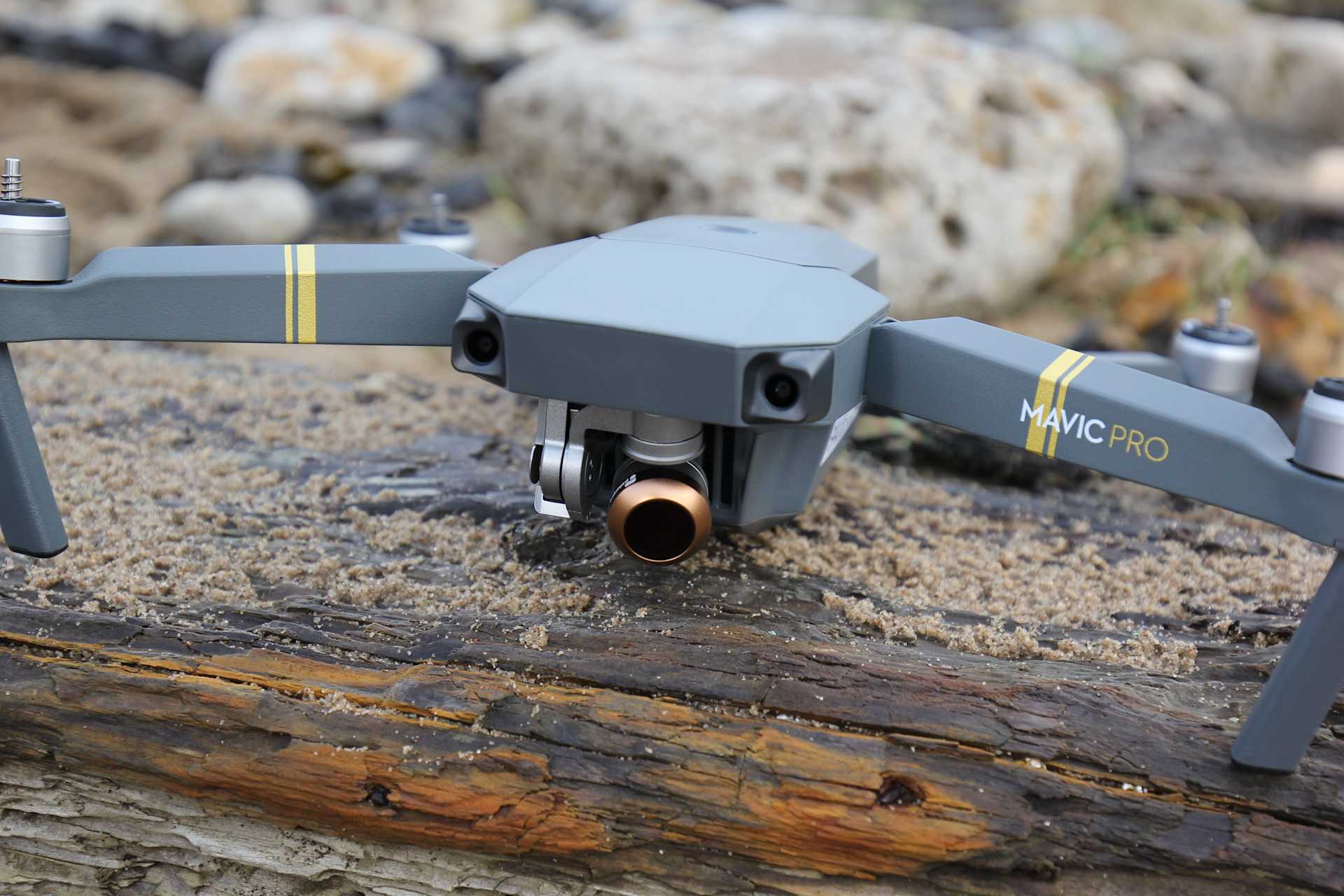
Products
DJI ND Filter Vs PolarPro Filters
Heliguy compares the DJI and PolarPro ND and ND/PL filters for video and images as well as explaining the uses of neutral density and polarising filters. ... Read More

ND Filters and Their Uses

Introduction to ND filters
Heliguy produced a short introduction video about how and when to use ND filters with your drone. https://youtu.be/6BpsbJsTJp8
Polarising Filters and Their Uses
As well as being ND filters, the PolarPro Vivid Collection filters are also polarising filters. A polarising filter is a great addition to a photographer and videographer's kit, be it aerial or any other work. The main purpose of a polarising filter is to reduce glare in images, especially from reflected light. Reducing glare results in photos and videos with more vibrancy which are will likely to have a better exposure with limited haze. A polarising filter can be useful in any condition to reduce the glare especially when shooting over water, snow or other reflective surfaces. Keep reading to see the ND and ND/PL in action below.
When to Use a Filter?

Filter Comparison
We've chosen to compare filters on the DJI Mavic Pro ND filters including the DJI ND Filters, PolarPro DJI Mavic Filters - Cinema Series - Shutter Collection and the PolarPro DJI Mavic Filters - Cinema Series - Vivid Collection. All of these filters are available through the Heliguy website or by phone. Let's start by taking a look at the comparison chart below for more details on each of the specifications of each lens pack.
Specifications
1513611019DJI_ND_Filter-small.png DJI ND Filter - Mavic | 1513611080PolarPro_DJI_Mavic_Shutter_Filter-small.png PolarPro ND Filter - Mavic - Shutter Collection | 1513611126PolarPro_DJI_Mavic_Vivid_Filter-small.png PolarPro Filter - Mavic - Vivid Collection |
#### Model Name | Mavic ND Filters Set (ND4/8/16) | DJI Mavic Filters - Cinema Series - Shutter Collection | DJI Mavic Filters - Cinema Series - Vivid Collection |
#### Drone Compatibility | DJI Mavic Pro Platinum and Mavic Pro | DJI Mavic Platinum and Mavic Pro | DJI Mavic Platinum and Mavic Pro |
#### Filter Type | Neutral Density Filter | Neutral Density Filter | Neutral Density and Polarising Filter |
#### Included Filters | ND4, ND8 and ND16 filters | ND8, ND16 and ND32 filters | ND4/PL, ND8/PL and ND16/PL filters |
#### Price | £33.00 (inc. VAT) | £79.00 (inc. VAT) | £89.00 (inc. VAT) |
As you can see, each pack contains filters with similar ND levels, however, the Vivid Collection from PolarPro also features a polarising aspect. The price of the PolarPro filters and DJI filters does vary depending on the brand of filter. Let's take a look at the image, video and usability of each of the filter sets to see which is better for you.
Image Comparison

Video Comparison
Functionality
Usability with drone filters is a key aspect as you will likely have to make changes in the field. You also don't want to lose a filter mid-flight and be scrambling around your flight location trying to find it.
Installation
Filter Fit
The DJI filters are attached to the lens using three clips whereas the PolarPro filter press onto the lens. The DJI filters are secure, however, the PolarPro have a much tighter fit that is advantageous during high-speed flight. A tighter fit will also reduce the chance of light going through any gaps between the filter and the lens.
PolarPro App
To offer additional support when using the PolarPro filters, PolarPro have developed a free of charge app to help you pick which filter to use in your location. This is done by working out the correct shutter speed based on your frame rate. The app will also give live updates on weather, wind speeds, KP index and programmable 'golden hour' notifications. The app isn't limited to aerial use and can be used for other applications. It is available for download on Apple and Android devices.
For more information on drone camera settings, please visit our previous Heliguy Insider post here.
Summary
Both the DJI and PolarPro filters are great filters, capable of improving your aerial videos and images. Based on the price, DJI's filters are a relatively cheap and very effective option. They're simple to use and easy to install and remove. They can help you produce high-quality images and videos. The PolarPro filters are more expensive but have an extremely secure fit that would be ideal for pilots who push their drone to the limits. The polarising aspect of the Vivid Collection can be hugely beneficial, especially if shooting around water, snow or other reflective surfaces. The PolarPro app also makes choosing the filter based on your camera settings significantly more simple. Either way, you're unlikely to be disappointed with any of the filter sets you choose.
Availability
All filters are available through Heliguy through the following links: DJI Mavic ND Filter Pack DJI Mavic Filters - Cinema Series - Vivid Collection DJI Mavic Filters - Cinema Series - Shutter Collection DJI Mavic Filters - Cinema Series 6-Pack Heliguy ND Filters
To discuss any information from the above post or any DJI or Freefly product, please give one of our team a call on 0191 296 1024 or email us at info@heliguy.com.
Keep checking back to Heliguy’s Insider Blog for more announcements, insights into drones and, of course, the latest news from the drone industry.
